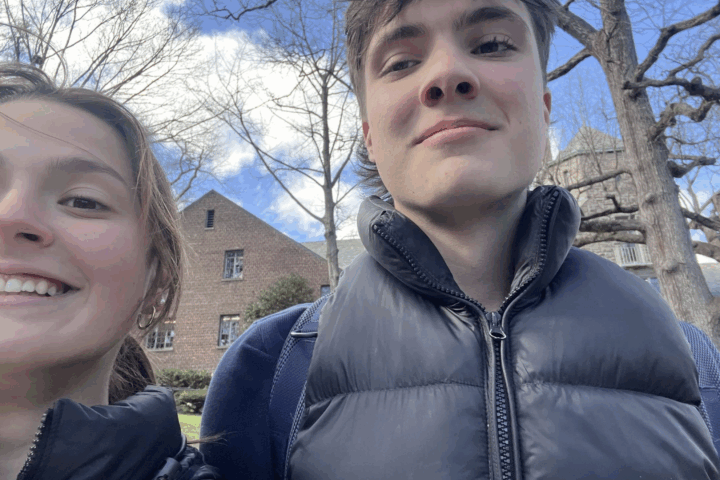Since the pandemic’s arrival in early march, New York has undergone a transformation. As a state, we have, in less than 6 months, gone from being the country’s epicenter for the virus to slowly returning to a different way of life amidst our currently low infection rate. But Many populations in New York as well as around the world have been left completely devastated by the pandemic. New York City’s homeless population is one of them.
To put their vulnerability into perspective, according to The Coalition for the Homeless, homeless people are 61 percent more likely to die from Covid-19 than housed people. Currently, New York City seems inundated with multiple layers of homelessness. There are new people pushed into homelessness through Covid and unemployment as well as a growing population of older homeless families and children who are victims of New York City real estate practices and decades of gentrification; there is a long-standing scarcity of affordable housing in the city; new to the mix is a cohort of people newly released from Rikers Island and city jails; and there is a chronic homeless population consisting of people with mental health, trauma and addiction issues. All of them are vulnerable; all of them need unique services. But their growing presence has sent a “shiver” through several New York neighborhoods and has made some New Yorkers feel unsafe in a way that they haven’t felt since the 1970s.
In early May, I got the chance to interview Joseph Loonam, who works at homeless advocacy group Vocal-NY fighting to aid and shelter New York City’s homeless . Last week, I got the opportunity to talk to Loonam again about the progress made over the last few months for NYC’s homeless population, as well as the further action needed.
In our first interview, Loonam emphasized the lack of action taken by Mayor Deblasio to help aid the homeless. Specifically, Loonam explained his frustration with the lack of action taken by Mayor Deblasio to open up the 30,000 hotel rooms that Vocal-NY demanded for NYC’s homeless population.
In our most recent interview, I asked Loonam to give an update about the Mayor’s actions. According to Loonam, “The city did do some things to protect the homeless, and it is impossible to say what would have happened if the city had not done those things, but they did not do enough and a good number of people died as a result.”
Loonam explained the complex system created was often more inefficient than efficient. “There were different hotels given to different people for different reasons…if you had a health concern, there was a certain type of hotel, if you were a frontline worker, there was a certain type of hotel, if you were elderly there was a certain type of hotel,” explains Loonam.
Though this peer system created by the city sounds organized and well-thought out, Loonam described it turned into a “complex bureaucracy” which left hotels sitting empty for long periods of time. While these hotels sat empty, people were left sick in the shelters.
Right now the city and the homeless are in a bind. “There are many people living on the streets right now, because the shelters are too dangerous, and a lot of people living in hotels in neighborhoods that have historically never been home to shelters, and have fought very hard to keep homeless people out of their communities.”
Taking the Upper West Side as an example, many residents have complained over the last few weeks of public drug use, public urination, and criminals filling the streets of their neighborhood, compromising the safety of residents, and demand that these hotels be vacated. Others simply don’t want shelters being brought to their community. How does Loonam feel about these concerns?
Over the telephone, Loonam spoke slowly: “It is important for the general public to understand that a lot of basic services, from those as simple as showers to as complicated as mental health treatment, are not happening for the homeless. So a lot of people are in bad situations where they are struggling to get their basic needs met. I think that is driving a lot of attention on the ground in communities who haven’t housed shelters in 20 years.” . Loonam points out that people want to help but often use the phrase NIMBY–Not In My Back Yard.
“I think there is a very aggressive, very loud nimbyism population right now.but I do reject the perception that they represent the majority of people in these neighborhoods…They don’t necessarily represent the attitude of the people in these communities.”
Loonam hopes that groups from these communities, like The Upper West Side and Hell’s Kitchen, in the coming weeks, will begin to accept the necessity of shelters in their communities by working to provide services and resources, as it is a long-term necessity. “We’re going to have to start exploring those avenues, as a city, and determine how we can house thousands of people,” states Loonam.
Looking to the future, Loonam hopes that the short term actions made to help ease the effect of the pandemic on the homeless will pave the way for long term action to solve the city’s homeless crisis. But Loonam also emphasizes the need for long-term planning and solutions.
While Vocal-NY is still fighting for the city to continue to open up hotel rooms for short-term housing, Loonam informed me that there are also three main long term goals that Vocal-NY is demanding the city to act on. First, they are demanding for the city to increase the city housing voucher available on a local level to cover market-rate apartments. Currently, it doesn’t cover market rate apartments in any of the boroughs, and if it did it would allow for a major decrease in the homeless population. Secondly, HPV does work with developers to build low income housing, majoritively through tax incentives, and Vocal-NY has long argued that a certain portion of that housing should be reserved for homeless people. Currently, given the pandemic, Vocal-NY is advocating for all of that housing to be opened up for homeless people. Lastly, the budget for these low income housing projects has been almost entirely cut from the city budget recently, and Vocal-NY is pushing for this budget to be restored as housing is now more needed than ever.
The pandemic has put a new emphasis on the importance of solving the long term homeless crisis in New York City, with Loonam stating, “I think that this is a moment for long term change…for the past 20 years the city has neglected to prioritize new housing construction for the homeless population. My hope as an advocate is that covid will be the straw that brings the cows back and forces the city to take action.”
The city needs to begin to take long term action to aid the homeless crisis while the homeless population is most vulnerable, and, with a wave of evictions following the pandemic almost inevitable, there is a dire need for historically non-accepting communities within the city to accept the homeless crisis and provide resources to help.





